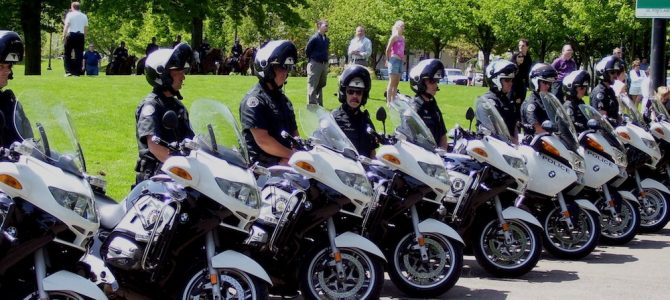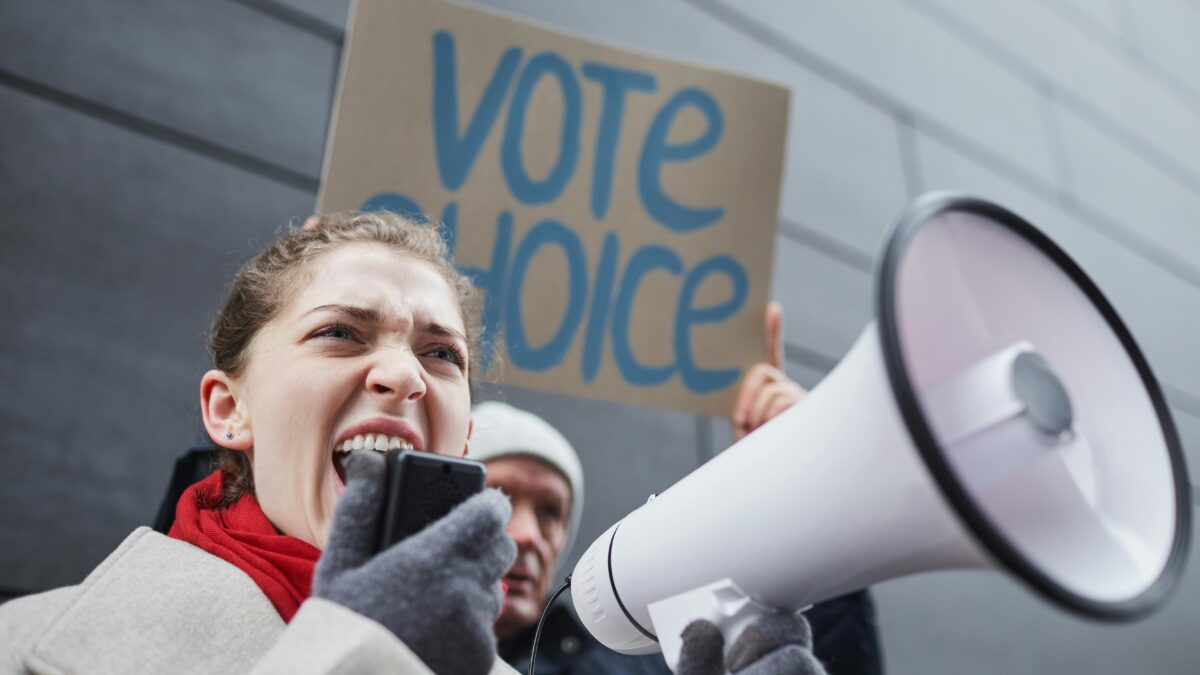
Fifty-two years ago, in Watts, California, two officers pulled over a black motorist who they believed to be drunk. A scuffle began, and things turned violent. By the time the violence ebbed, 34 people had been killed, and $40 million worth of damage had been done.
Twenty-five years ago, the story seemed to repeat itself: another drunk driver, another police beating, another race riot in southern Los Angeles that claimed dozens of lives and left neighborhoods smoldering.
If riots were earthquakes, LA would be due for another. A recent poll suggests that Angelenos are bracing for exactly that. A quarter-century after Rodney King, these stories still feel uncomfortably contemporary. Race riots are back, and policing is still the main fuse. Over the past three years, violent demonstrations have hit Ferguson, Charlotte, Milwaukee, and other cities, even as homicide and gang violence become more prevalent across multiple American cities. We’re feeling the tremors. Is a major quake on the way?
We Have To Think About Our Expectations For Police
In a way, it’s maddening to find ourselves comparing riots to earthquakes. Humans, after all, are not tectonic plates. We have agency. No one benefits from a quadricentennial torching of civilized society. So can’t we just find a way to get along?
Reflecting on this sad state of affairs may tempt us to think in cosmic terms, viewing racial unrest as a fixed feature of our national character, perhaps derived from America’s Original Sin or deep-seated tribal loyalties. A finer-grained analysis may yield a less bleak (if more prosaic) diagnosis. It’s possible to keep order without creating unrest. The past few decades have in fact seen some remarkable innovations in crime control. If we can develop and implement them properly, it should be possible to maintain civic order without sacrificing Constitutional rights.
We may need to think more carefully, however, about deep tensions in the expectations we place on police officers.
The Man Who Professionalized Policing
Fundamentally, we want officers of the law to be three things: warriors, community workers, and sleuths. Fight crime, serve the public, and crack the case. These functions are not mutually exclusive, but choosing the right hat for the right situation can be a scramble. A mindset that supports one of these functions may not be optimal for another.
The King riots drew the nation’s attention to the shortcomings of a “warrior”-oriented model of policing. For decades before the fateful Simi Valley verdict, however, the LAPD had been the nation’s leading model of “professionalized policing.”
When the legendary Bill Parker took over the LAPD in 1950, he immediately began applying his experience as a decorated World War II veteran. Effectively, he made his police force into a kind of domestic military.
Seeing egregious problems with corruption and inefficiency, he slimmed down the force, creating an administrative structure that was meant to insulate his officers from political and public pressures. Parker wanted his department to set its own agenda, and he wanted his officers thinking of themselves as crime-fighting professionals, not on-call neighborhood boy scouts. On his watch, the sleek and imposing squad car replaced the friendly beat cop. His police academy trained recruits in tactics modeled on military peacekeeping efforts. Some credit the legendary chief with coining the term “thin blue line.”
How Professionalization Became Militarization
Parker was beloved for a reason. He made great strides towards reducing corruption and restoring the image of the LAPD. He was a fan of probity, and not overly enamored of the tough-guy police ideal. If you’ve ever watched “Dragnet,” you’ve seen his running commercial for the style of policing he wanted: upright, prudent, by-the-book.
Professionalization has its benefits, but there are downsides too. Parker’s protégée vividly illustrated this point across his 14 years running the LAPD. Undeniably talented, Daryl F. Gates’ passion for fighting crime was never adequately tempered by an appreciation of restraint. He is remembered today as the father of SWAT (originally meant to be the “Special Weapons Attack Team”), as well as for the thousands of indiscriminate arrests made under “Operation Hammer” in the late 80’s. After a lifetime of pursuing the bad guys, it was sadly ironic that Gates ended his career in a firestorm of criticism over his decision to attend a fundraiser just as the King riots were spiraling out of control. He spent his retirement making police-themed video games. Parker may have “professionalized” the LAPD, but under Gates, it was “militarized.”
We needn’t justify rioting to draw lessons from the King debacle. Realistically, we do need crime-fighters to be tough. At the same time, domestic policing is not warfare, and police can’t be effective when they’ve come to view ordinary citizens as enemy hostiles. Officers are at far greater risk entering neighborhoods where law enforcement is viewed with mistrust. They’re more likely to be targeted, and they can’t get the information they need to close crimes. Professionalization paid certain dividends, but the costs of that distancing were painfully evident on April 29, 1992.
How To Go Beyond Tough-Guy Policing
Is it possible to dial back the aggression and still maintain order? There are reasons to think so. The warrior needs to be balanced by his counterparts: the social worker and the sleuth. In the years since the King riots, two other models of policing have made significant strides in certain parts of the country, giving more space to these two other personae.
Community policing is a self-consciously demilitarized model that encourages officers to cultivate personal connections to the communities they police. In the years following the King riots, the Department of Justice actively promoted community policing, and most departments now incorporate certain elements. The goal is to help police become trusted, credible community members, not just specialized crime-fighters. Military tactics are de-emphasized, and developing community relationships is treated as part of the job. Officers are more extensively trained to recognize and respond to drug addicts and the mentally ill, exploring alternatives to violent force.
These efforts seem to be bearing some fruit in certain neighborhoods, among them the historically-troubled Watts, where LA’s first major riot began. Violent crime is down, and residents indicate that they feel safer. Apparently it is possible to defuse these longstanding tensions, though this does seem to require concentrated and sustained efforts of a sort that might be difficult to replicate in every neighborhood.
The Promise Of ‘Intelligent Policing’ For The Future
Problem-oriented policing (sometimes called “intelligence policing” or “predictive policing”) uses data, analytics, and a results-oriented managerial system to improve crime control without needless aggression. Many elements of this were incorporated into New York’s famous CompStat program, piloted by crime-fighting entrepreneurs like William Bratton. Taking charge of the NYPD’s Transit Police in 1990, Bratton recognized that he was not, for the most part, dealing with hardened criminal masterminds. Trained officers have a huge advantage in dealing with drug addicts, drunks, and gang-banging teenagers; they’re smarter, better-trained, and better-equipped.
With a clearer understanding of crime patterns, we should be able to deploy resources more efficiently, targeting particular problems without being unnecessarily invasive. Sweeping, indiscriminate arrests (such as Gates used) require tremendous manpower and create widespread resentment. Intelligence-based models aim to make policing smarter rather than tougher, and the results in New York and elsewhere have been impressive. They are probably a major reason why crime continued dropping across the late 90’s and early 2000’s.
We Haven’t Entirely Dissolved Unrest
Given these advances, why does policing continue to cause unrest?
Cell phones are one factor. In the early 90’s, frustrated LA residents were jubilant that at last there was real video evidence to substantiate their complaints. Cell phones now inundate us with videos of varying quality, and this “episodic transparency” is a public relations nightmare for police departments. The court of public opinion seems to grow hastier and less judicious with each passing year. Rodney King’s supporters at least waited for a verdict before taking to the streets; Black Lives Matter doesn’t usually offer that same courtesy. A long-term solution will have to involve better transparency and some restoration of public trust. In the short run, things are admittedly volatile.
Beyond the technology issue, the fact remains that a plethora of new theories and techniques won’t automatically translate into reliably good policing. Implementing any of these methods takes considerable time and effort, and they aren’t always easily compatible. Community policing methods are somewhat in tension with the more professionalized model, and the latter has started to seem more relevant again as counterterrorism becomes a growing concern. Intelligence-oriented models aren’t strictly incompatible with either, but they add a level of complexity to police operations that can complicate other efforts. It’s hard to be a warrior, a worker, and a sleuth, all in a single day’s work.
Police officers are expected to be many things to many people. Sometimes, under the pressure of a snap decision, they pick the wrong hat. As we consider the future of policing, we need to ask some hard questions. Is it reasonable to expect police to be tough enough for drug lords and terrorists, but also sensitive enough to deal with peevish teenagers? How many hours can we ask cops to log building community relationships, considering that we also expect them to be rooting out terrorist cells, chasing down muggers, and asking the guy up the street to turn down his stereo? Transparency is good, but we also need a realistic sense of the limits of law enforcement.
We Can Help Prevent Future Riots
Riots are not like earthquakes. Measures can be taken to forestall them. In our time, we need to be more judicious about our use of police power. Police officers should not be used as petty tax collectors, or as a go-to source of manpower for public projects. We should be especially careful about asking police to initiate potentially-violent confrontations with citizens (as in no-knock raids on civilian homes). Maintaining the balance between warrior, worker, and sleuth is hard enough without piling on extra burdens. Beware mission creep.
Finally, we need to work towards greater transparency in policing. In the present climate, it’s not enough just to ask people to support the police. Many people simply don’t trust law enforcement, perhaps for good reasons. Citizens do need to take an active interest in cooperating with police to solve neighborhood problems. Be willing to do more than just protest. But community relations are a two-way street, and better oversight is needed to ensure that abuses are seriously investigated, and that cops with a consistent pattern of problematic behavior aren’t simply allowed to go on terrorizing citizens.
Humans have agency. We can change. Let’s do what we can to prevent a sequel to the Rodney King riots.









